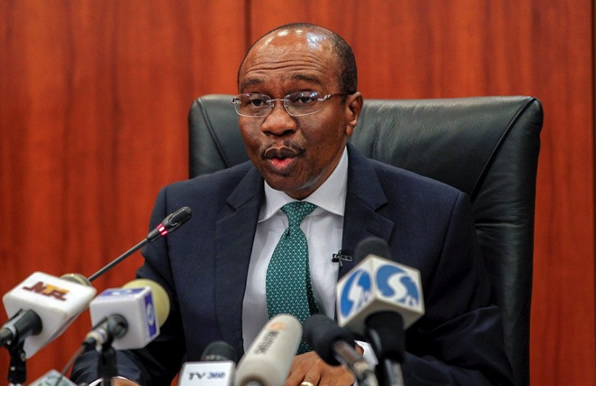The Central Bank of Nigeria has revealed that the Federal Government had a fiscal deficit of N910.41bn in the last three months of 2018.
This was contained in the economic report recently released by the apex bank. It stated that, “Federally-collected revenue, at N2.41tn, in the fourth quarter of 2018, was 27.4 per cent and 4.8 per cent lower than the estimate and the receipts in the preceding quarter, respectively.
“The development relative to budget estimate was due to the shortfall in receipts from both oil and non-oil revenue in the reviewed quarter. Federal Government estimated retained revenue and total expenditures were N916.44bn and N1.826tn, respectively, resulting in an estimated deficit of N910.41bn in the fourth quarter of 2018.”
The report also noted that the cessation of rainfall in the period led to widespread dryness across the country. This limited agricultural activities in the fourth quarter to harvesting of tubers, grains and vegetables.
“In the livestock sub-sector, farmers continued with the breeding of poultry birds and fattening of cattle in anticipation of the end of year sales,” the CBN said.
It said the end-period headline inflation on year-on-year and 12-month moving average bases for the review period were 11.44 per cent and 12.10 per cent, respectively.
The CBN maintained a non-expansionary monetary policy stance in the fourth quarter of 2018, aimed at further curbing inflationary pressure.
Read also: Fashola urges institute to take advantage of FG’s investment in infrastructure Infrastructure
Broad money supply (M3), on a quarter-on-quarter basis, grew by 8.3 per cent to N33.42tn at end-December 2018, compared with the growth of 5.1 per cent at end-September 2018.
The development reflected, wholly, the 4.5 per cent increase in domestic credit (net) of the banking system.
Over the level at end December 2017, broad money supply, (M3), grew by 16.6 per cent, compared with the 7.6 per cent and 0.6 per cent growth recorded at the end of the preceding quarter of 2018 and the corresponding quarter of 2017, respectively.
The growth in M3 was due to the 6.4 per cent and 18.5 per cent increase in domestic credit (net) and foreign assets (net) of the banking system, respectively.
On a quarter-on-quarter basis, narrow money supply (M1), rose by 9.2 per cent, compared with 0.5 per cent and 11.0 per cent at the end of the preceding quarter.
The development was due to the 19.4 per cent and 7.5 increase in its currency outside banks and demand deposit components, respectively.
Developments in banks’ deposit rates were mixed, while lending rates reducing in the review quarter.
With the exception of the one-month and three-month deposit rates which fell by 0.26 and 0.04 percentage point to 8.79 per cent and 9.43 per cent, respectively, all other deposit rates of various maturities rose from a range of 3.68 – 10.10 per cent to 3.86 – 10.52 per cent at end-December 2018.
The average savings rate remained unchanged at 4.07 per cent, same as at the end of the third quarter of 2018, while the average term deposit rate rose by 0.12 percentage points to 8.63 per cent at end of the review quarter. The average prime and maximum lending rates declined by 0.09 percentage point and 0.18 percentage point to 16.60 per cent and 30.75 per cent, respectively.



Leave a Reply